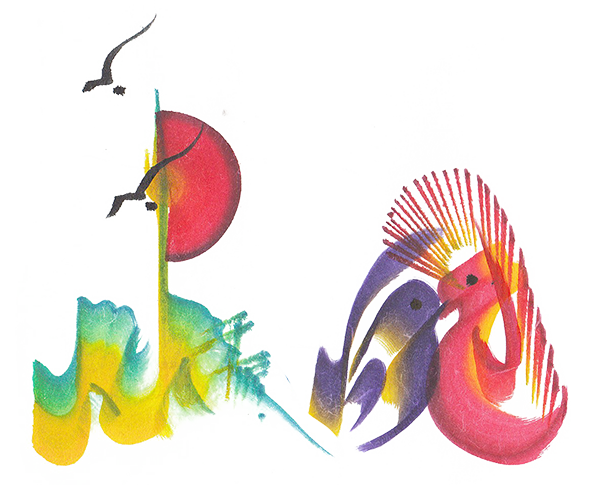SEE HERE : THE SCOTSMAN AND HIS TECHNICOLOR STAIRCASE
“Nature is a haunted house, but art is a house that wants to be haunted.”
Edinburgh is a city of stairs and stone, and it does not want for hauntings. Viewed from below, the axis of the Old Town shoots skyward to the castle like it’s floating on air, and the stepped closes and wynds that tumble down from its heights dangle like ropes from the floating island of Laputa. And like the engravings on the pages of Gulliver’s Travels, the city is also rendered largely in black and white.
The Scotsman’s Steps are neither a close nor a wynd – in fact, the council classifies them as a road - but they are part of Edinburgh’s network of dark, narrow, steep passages that transport pedestrians from the high places to the low places in a banal bit of quotidian magic. The Scotsman Hotel was, in its own former life, the home of the Scotsman newspaper, and among the ghosts to patrol the steps are a phantom printer and his friend the phantom forger.
Until 2010, the elegant conch-like spiral of the stairs’ encasement belay a lot of filth – vomit and piss, mostly. The council decided to refurbish the steps, and the neighbouring Fruitmarket Gallery commissioned them as a work of art. The 104 steps were each clad with a different kind of marble from a different part of the world and reborn as Martin Creed’s Work No. 1059. The work formed part of the solo exhibition Down Over Up, which stacked and arranged things by size and scale, and included a recording of a choir singing a scale as the elevator ascended floors.
The steps were originally intended to also be musical, like the bridge in FAO Schwartz, but the practicalities of its hard use as stairs scuppered that plan (though the internal stairs in the gallery itself were made into a synthesiser instead). Creed says the steps are a microcosm of the world in Edinburgh. He wanted to make the steps beautiful: “I don’t know what beauty is, but for sure I’ve always thought that marble was a beautiful material.”
Five years later, the steps still smell alternately of piss and disinfectant. Despite this, they continue to be more than just literally transportative. A dismembered reflection stares back at you from the buffed Victorian subway tile walls, and any words spoken ricochet off the walls and floor and out the barred windows. But that floor! With the identical sound of each footfall comes a disconnected view underfoot – the ground changes with each step, from deep blue to emerald to mustard to oxblood. The terrestrial connotations of the marble grounds the steps in a way that the infinity of sound never could.
Anyone who uses this thoroughfare now becomes a ghost, floating over the surface of the world and looking down at the patterned earth. By the time you reach the ground again you have forgotten where you are – you’ve travelled the world. I read once that the success of a work of public art depends on the work’s ability to withstand the public’s mistreatment of it. Nowhere is that more articulately demonstrated than in these beautiful steps, reeking of urine.
Art creates its own ghosts, and public art makes ghosts of us all, if we pay attention. So, ghosts, inhabitants of this city in grisaille - come and see the magical technicolour steps, and see where you end up.
DECEMBER 2016
SEE HERE is a monthly musing on a single artwork from anywhere, written by Amy Stewart: @A_L_STEWED // ASTEWARTWRITING.COM.

